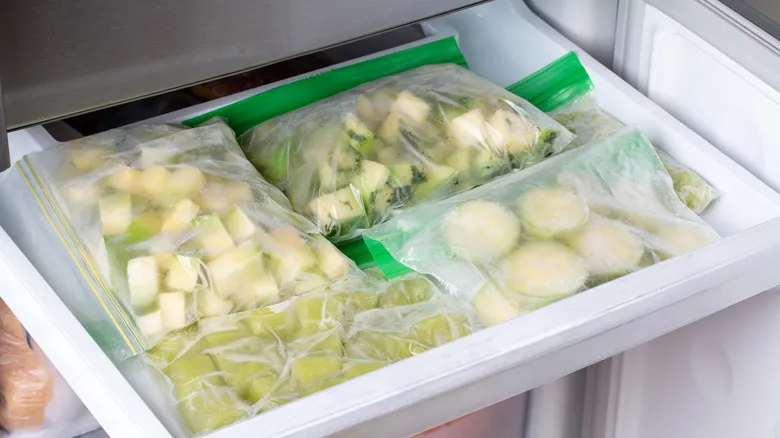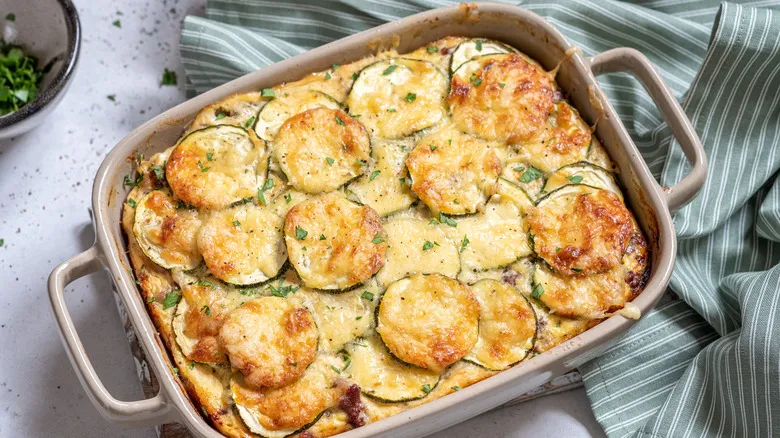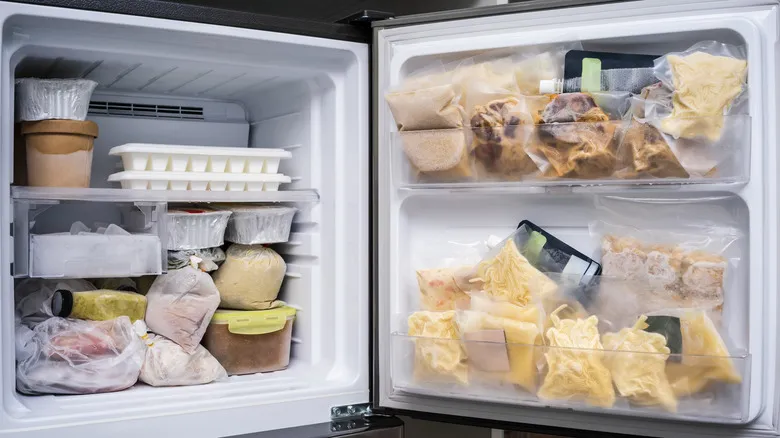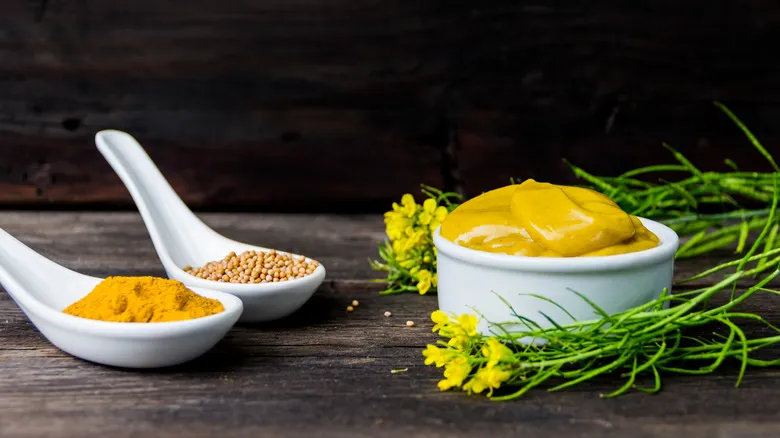Freeze zucchini for even longer storage

If you have more zucchini than you can consume in a couple of weeks, freezing is the ideal solution. However, it requires a few additional steps since you can't simply freeze whole raw zucchinis; they will become mushy upon thawing. Begin by chopping the zucchini. Depending on your intended use, you can slice, spear, or cube the squash.
Next, you'll need to blanch the zucchini, a technique that helps preserve its bright color and most of its original texture during freezing. Start by boiling water in a pot on the stove, then add the zucchini pieces and let them cook for about two to three minutes. Once the time is up, remove the zucchini and transfer it to an ice bath, which is just a bowl filled with cold water and ice. This sudden drop in temperature will stop the cooking process and prevent the zucchini from becoming overcooked. Allow the pieces to cool completely for a few minutes, then drain and pat them dry.
The final step is flash freezing. Spread the blanched and cooled zucchini on a baking sheet lined with parchment paper. Place the sheet in the freezer for approximately two hours. Once frozen, transfer the zucchini to a resealable freezer bag, making sure to remove as much air as possible before sealing. Label the bag with the date and the contents, then store it in the freezer for use within three to six months.
How to defrost frozen zucchini

When you're set to prepare a meal featuring zucchini, the first step is to defrost the squash. However, it's important to think about how you intend to use it. If you're making casseroles, stews, or soups, there's no need to thaw it beforehand. Just toss the frozen pieces directly into the pot or baking dish along with the other ingredients, and they will thaw and cook as the dish simmers.
Conversely, if your recipe calls for thawed zucchini, the best approach is to use the refrigerator. Move the frozen zucchini from the freezer to the fridge the day before (or at least a few hours prior) to allow it to thaw gradually. This method is convenient since it requires no active effort, but it does require some advance planning.
What if you forgot to move the frozen zucchini to the fridge the night before? There's a faster option: place the frozen squash under cold running water. This method will only take a few minutes, and your zucchini will be ready to cook. Just keep in mind that the texture of thawed zucchini may differ from fresh, as freezing and thawing can release extra moisture. Nevertheless, there are plenty of ways to prepare this zucchini into a tasty dish.
Delicious ways to use leftover zucchini

There are numerous recipes to explore when it comes to cooking with leftover cut or uncut zucchini, whether you're using a defrosted batch from your freezer or fresh ones from your crisper drawer. One of our favorites is frying them. All you need is a blend of panko and parmesan cheese for the breading to coat the vegetable strips. Then, simply place them in hot deep fryer oil for a perfectly crispy and delicious appetizer.
Looking for something heartier? Zucchini is fantastic for creating savory vegetable-based casseroles or fritters — crispy on the outside and wonderfully creamy on the inside. For a unique twist, take that whole zucchini from your crisper and spiralize it into zoodles, a fantastic low-carb pasta alternative. A quick sauté with some cooking oil, aromatics, and your favorite sauce is all it takes.
You should also try zucchini in baked goods. Did you know that zucchini is the secret ingredient that makes cakes (and other baked treats) incredibly moist? Just incorporate the squash into your bread, cake, and muffin batters, and you’ll be amazed. It’s a smart way to sneak in some veggies without compromising on taste. Overall, properly storing zucchini — whether whole, cut, fresh, or frozen — can prolong its shelf life and provide you with plenty of chances to enjoy it in a variety of dishes.
Recommended

The Worst Places In Your Kitchen To Store Potatoes

In Case Of A Power Outage, How Long Does Food Last In The Freezer?

Never Deal With Clumpy Spices Again Thanks To One Clever Trick

Is It Safe To Store Mustard At Room Temperature?
Next up

